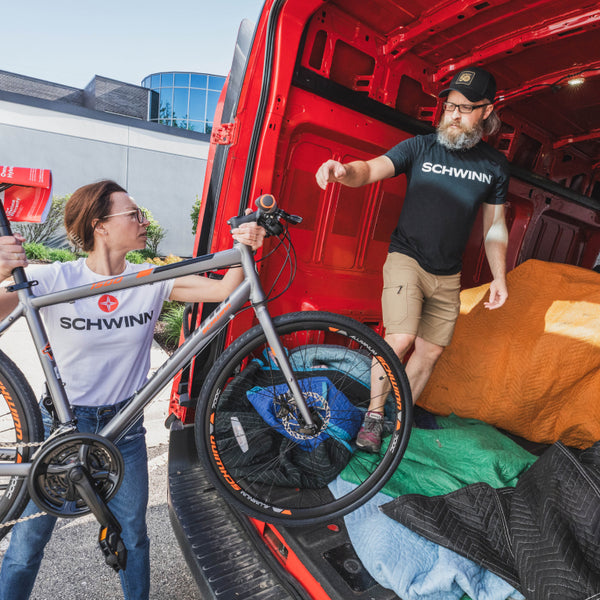
Taking in the city on my Schwinn
I’m a cyclist, but I’m also a historian; sometimes even a bike historian. Just like there’s different kinds of bikes, there’s different kinds of historians. Recently, I’ve noticed that the bike I’m riding determines what kind of history I think about.

When I’m riding in my college town, I’m on a sixty-year-old, 3-speed Schwinn Racer: upright and practical. I ride my short rounds to work and shops in regular clothes; we call this “everyday cycling.”
Riding my Schwinn, I’m an urban historian. This bike lets me see history on the scale of decades; the difference between compact urban neighborhoods and far-flung suburbs. Bikes let you cut through parks and parking lots, underpasses and trails. It’s like a backstage tour of the city.

Outside city limits
When I ride a gravel or road bike outside of the city, I’m an environmental historian: I see on the scale of hundreds or even millions of years. Here I think of the bluffs of the “Driftless” region where I live - unlike the flat Midwest plains that surround them, these bluffs were not ground down under glaciers tens of thousands of years ago. Riding the Driftless is an endless series of climbs and descents through narrow valleys and ridges. It’s exciting to ride, but sometimes exhausting.
Traveling the Driftless on a bike might put one close to the experience of the first people here; this is the land of the Ho-Chunk nation. Trails and settlements here followed the narrow valleys because that’s the way that humans move through space under their own power, then as now.
Eighteenth-century French visitors named these water-eroded “coulees” after the French couler, “to flow.” When settler groups colonized the area in the 19th century, the valleys were named after them: Russian, Irish, and Mormon Coulees. Narrow and winding climbs in the coulees offer great riding, but make farming difficult; only small dairy operations, family farms or Amish communities can make a go of it here.

The history of gravel vs. paved roads
Political history matters too; on the Wisconsin side, many rural roads are paved. Just a few miles away in Minnesota, a similar road might still be gravel, to my delight. The difference stems from a 1890s political debate over the Good Roads movement, an effort to pave roads through general taxation that was more popular among Wisconsin’s dairy farmers.
On my Schwinn, I’m an urban historian, and on a gravel bike, I’m an environmental historian. But knowing that the way that I move through the world changes the way that I understand that world makes me think like a mobilities scholar, another way of thinking.
The views from the top of the bluffs are different from the views below, and the bike is what brought me to see that. The same thing can happen for everyone; ride a bike instead of driving your car, and you’ll see a different city and a different society. Ride a bike, and your world will change around you. As for me, I’m going for a ride in the Driftless.
- James Longhurst is a historian of urban and environmental policy at UW-La Crosse. He is the author of the book “Bike Battles: A History of Sharing the American Road.”
Looking for the perfect ride to explore your city or take on gravel roads like James? Check out our collection of Hybrid bikes today!











